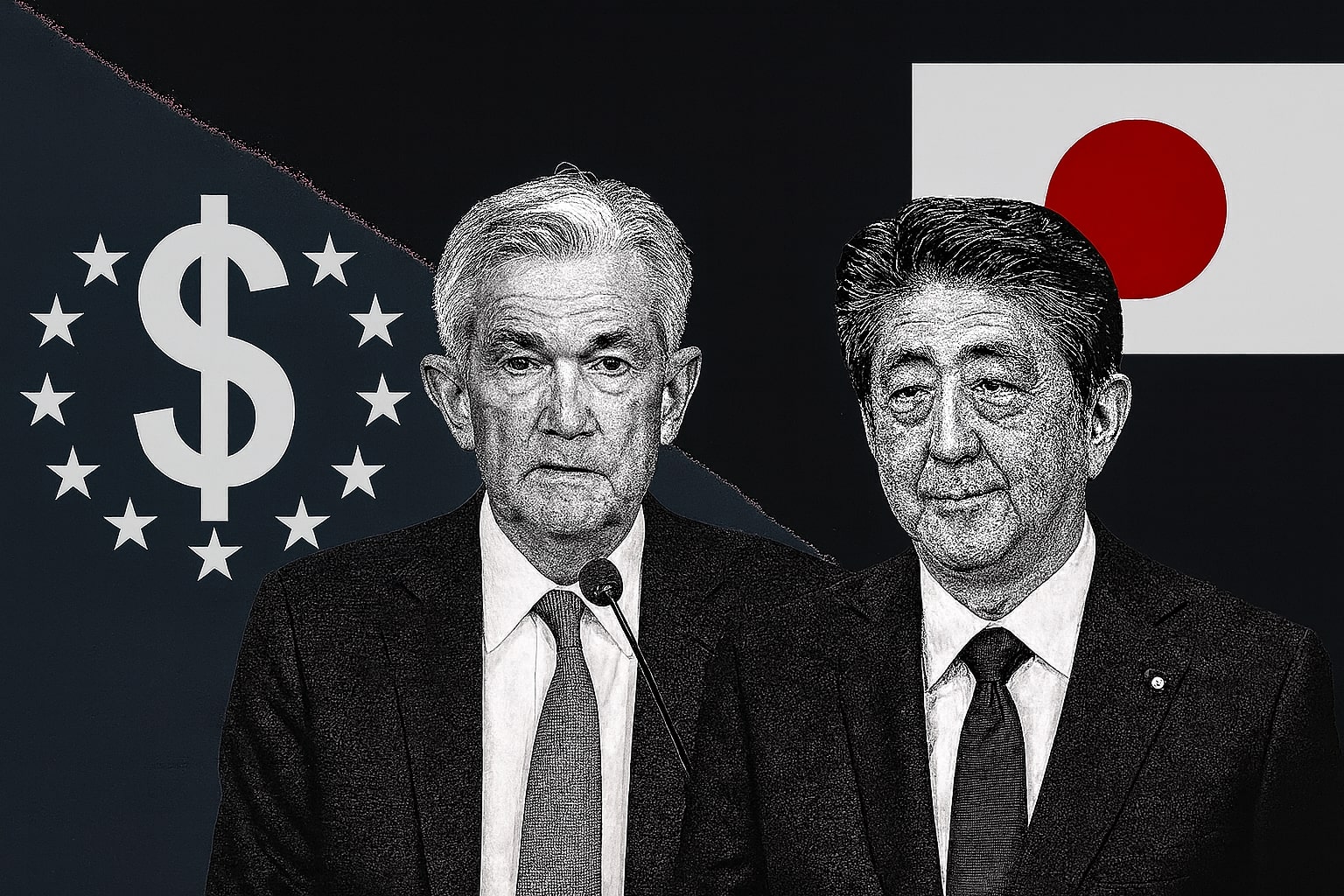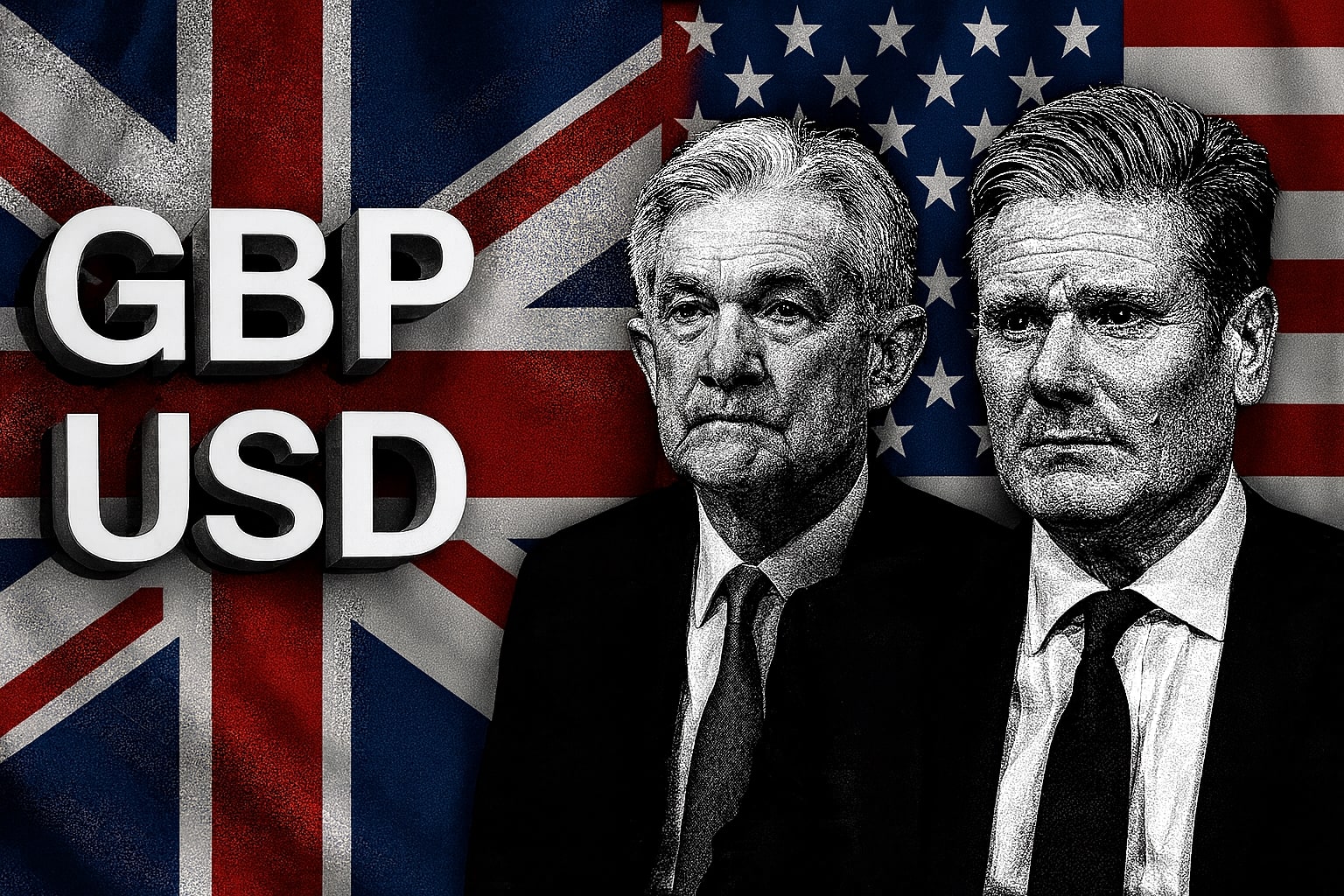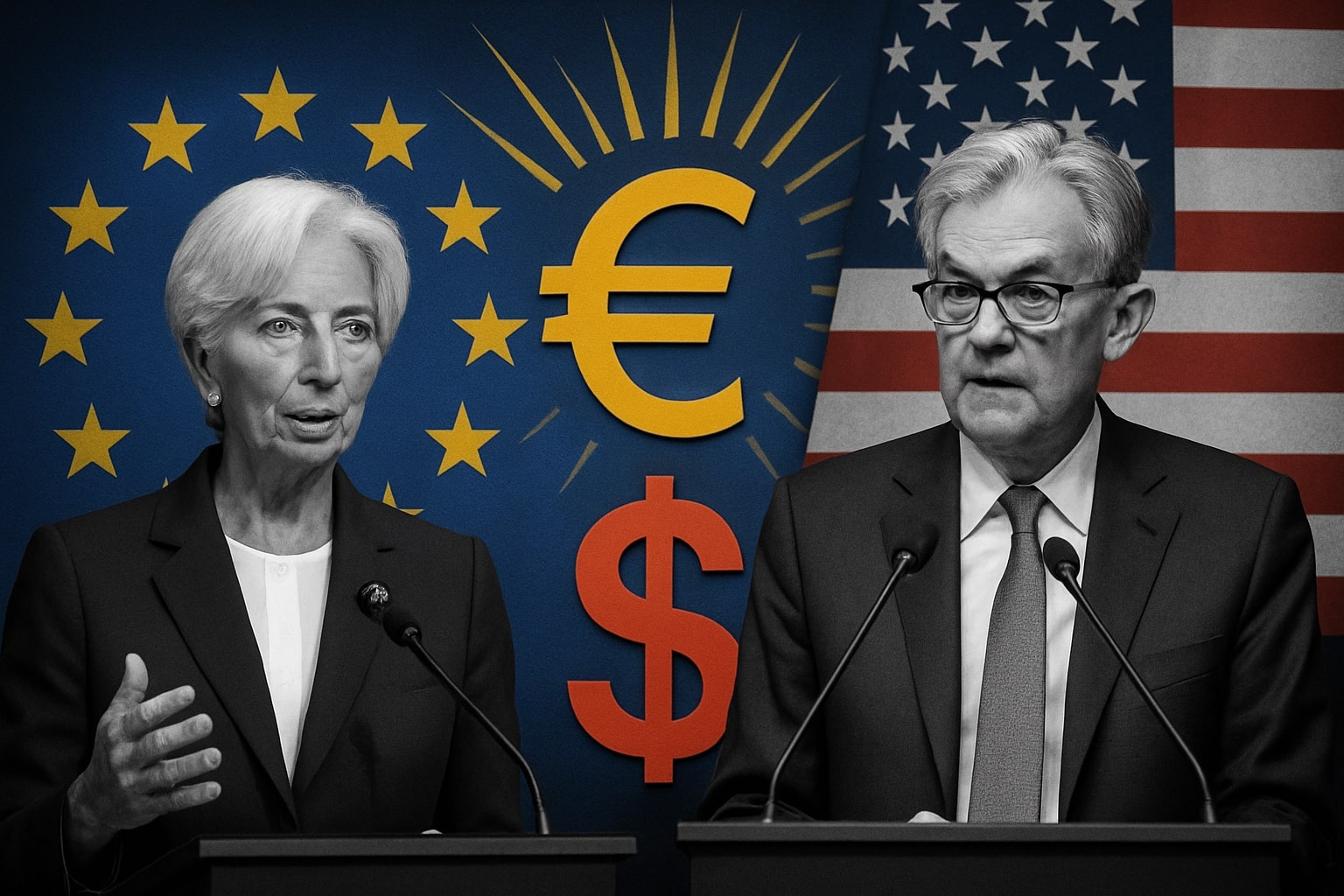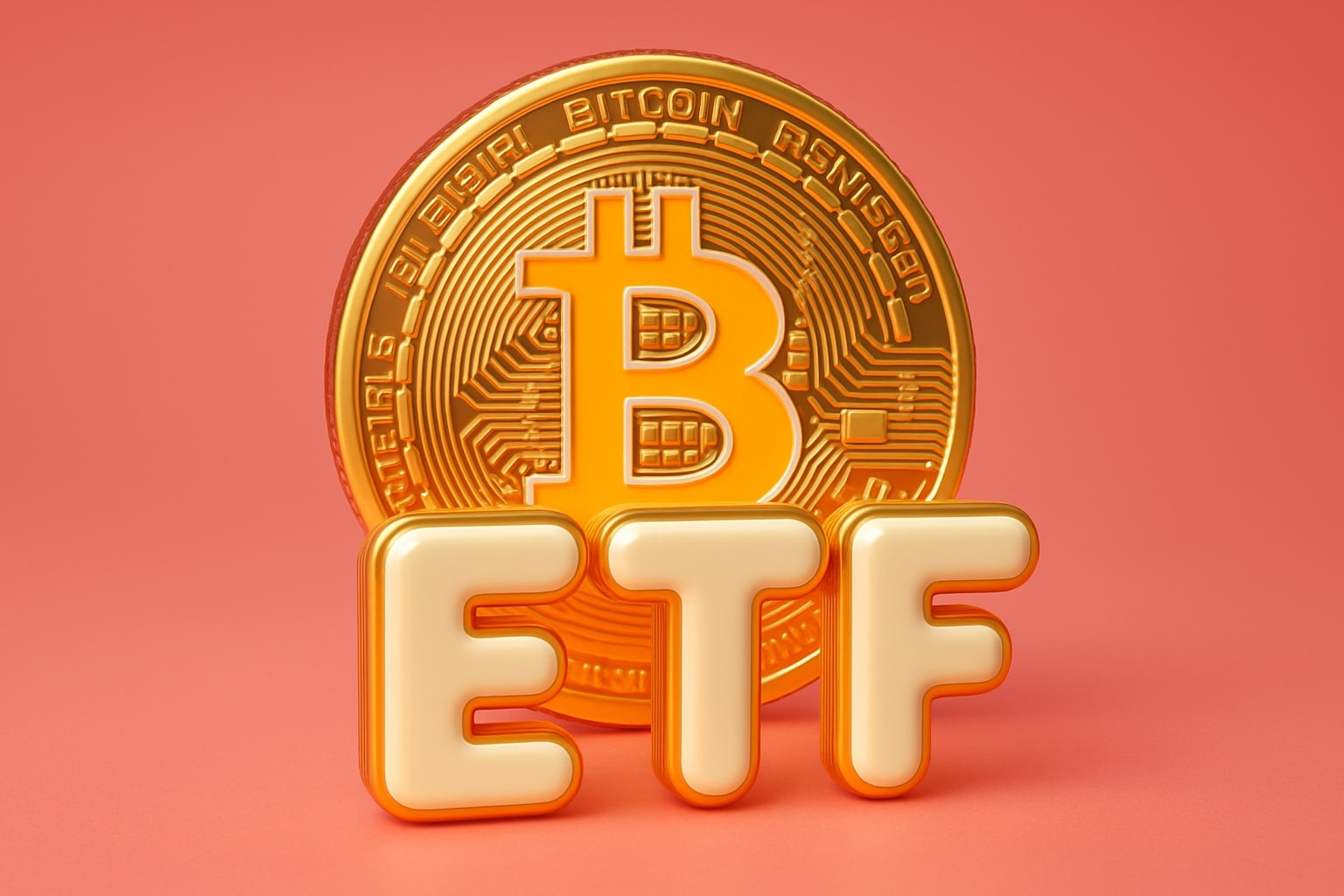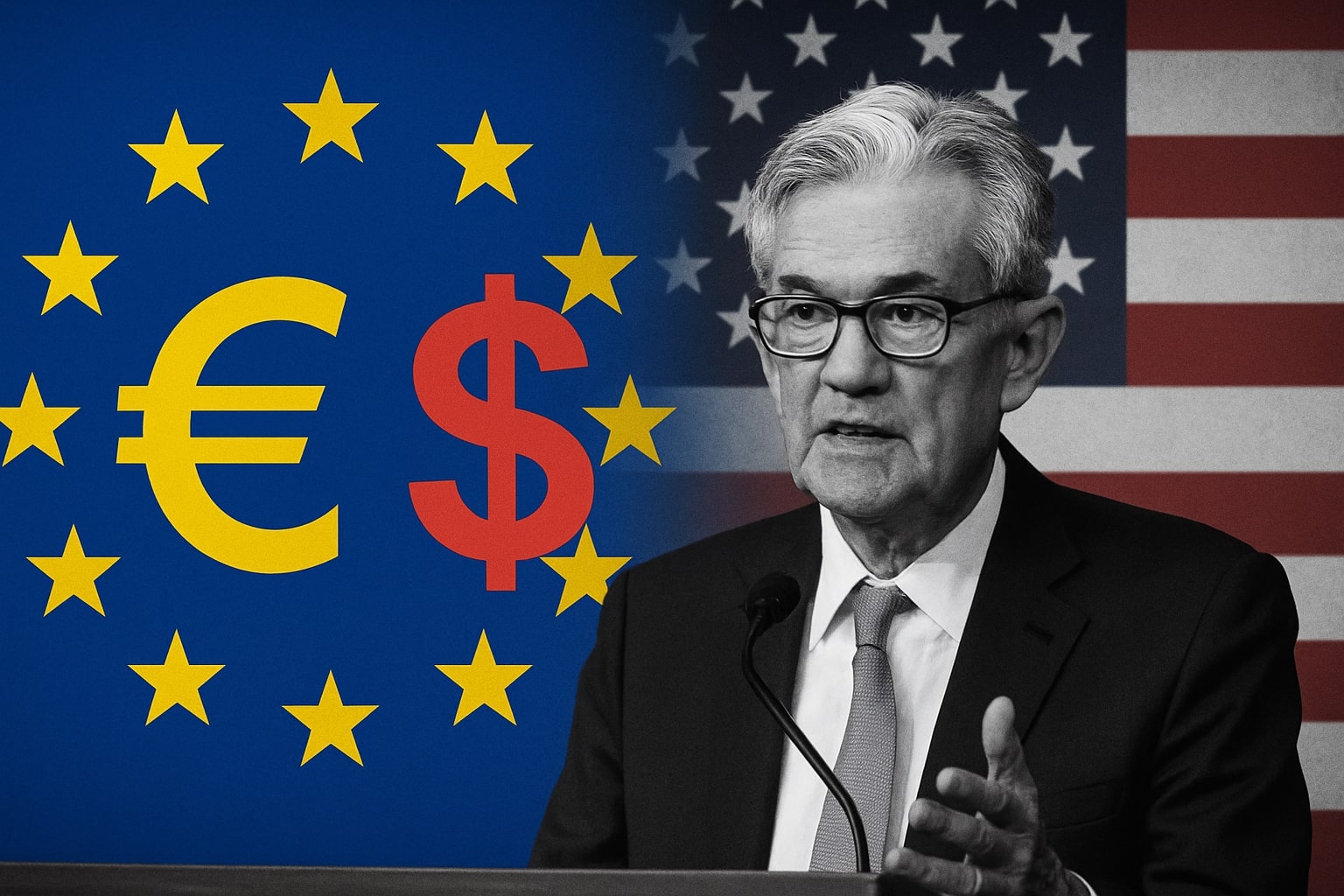
EUR/USD Price Forecast - Euro to Dollar Holds Near 1.16 Ahead of Fed Cut as Traders Target 1.1750 Break
The euro traded between 1.1665–1.1577 this week as weaker U.S. inflation (+0.2% MoM, +3.0% YoY) and 98% rate-cut odds drive bullish bets | That's TradingNEWS
EUR/USD Price Forecast (EURUSD=X) Faces High-Pressure Week as Fed Cut Odds Hit 98% and Markets Bet on a 1.20 Rebound Into Year-End
The Euro to U.S. Dollar (EUR/USD) pair closed the week at 1.1628, down 0.20%, but the real story begins this Monday as traders brace for a critical FOMC decision that could reset global FX valuations. The pair traded between 1.1665 and 1.1577 last week, showing sharp intraday swings tied to delayed U.S. CPI data, a fragile eurozone recovery, and deep uncertainty surrounding U.S. fiscal operations. The Federal Reserve’s October 29 meeting carries near-total market conviction—98.3% probability—for a 25-basis-point rate cut, but the message from Chair Jerome Powell on quantitative tightening (QT) will dictate the next directional leg for EUR/USD.
Volatility Returns as U.S. Inflation Weakens and the Euro Fails to Hold Gains
After the delayed U.S. CPI print—+0.2% MoM, +3.0% YoY—the EUR/USD spiked to 1.1650, only to fade as investors reassessed liquidity and rate expectations. That move marked the third failed attempt this month to sustain above 1.1655, suggesting sellers continue to defend that zone. Despite weaker U.S. inflation, the euro’s rally proved short-lived as traders prioritized policy tone over data noise. The U.S. government shutdown, now in its third week, has created data blackouts across employment and spending metrics, leaving the Fed to navigate without critical inputs. The market’s discomfort with missing data has capped speculative long exposure in EUR/USD despite dovish macro conditions.
The Fed’s Challenge: Cut Rates Without Losing Control of Inflation Expectations
Markets fully expect the Fed to deliver a 25 bp cut, lowering the federal funds rate to 3.75%–4.00%, but Powell’s guidance on quantitative tightening could be the more decisive signal. The Fed’s balance sheet runoff has pushed bank reserves to around 10% of GDP, close to the lower bound of comfort. ING economists suggest the Fed may halt Treasury runoffs altogether to prevent liquidity stress, effectively injecting fresh reserves into the banking system. Such a move would weaken the dollar structurally. If confirmed, EUR/USD could break resistance near 1.1700, with scope toward 1.1750–1.1800 in early November.
Europe’s Macro Pulse: Stability Without Growth Keeps ECB in a Holding Pattern
The European Central Bank has stayed neutral amid declining inflation and sluggish GDP growth. Headline eurozone inflation eased to 2.7% YoY, and core CPI dropped to 2.8%, marking the slowest pace since 2022. While the ECB signaled that rates have likely peaked at 4.00%, officials remain cautious about premature cuts. That relative stability contrasts with the Fed’s aggressive pivot and gives the euro a latent yield advantage over the coming quarters. Market pricing for 2026 now anticipates the ECB cutting later than the Fed, a dynamic that historically supports EUR/USD strength in mid-cycle turns.
Technical Tension: Bulls Defend 1.1600, Bears Guard 1.1655
Technically, EUR/USD remains locked in a tight consolidation band between 1.1570 and 1.1665, as momentum oscillators reset after September’s slide. The RSI (14) hovers around 49.5, neutral but climbing, and MACD has turned positive for the first time since early October. Price action near the 100-day moving average (1.1605) will determine short-term direction. A daily close above 1.1655 confirms a short-term breakout, opening 1.1720 as the next target; failure to defend 1.1590 exposes 1.1550, the month’s low. Option flow data show heavy strike activity around 1.1650 and 1.1750, indicating markets are hedging for an upside resolution post-FOMC.
Read More
-
PPA ETF at $154: Can This Defense ETF Keep Beating ITA and SPY?
14.12.2025 · TradingNEWS ArchiveStocks
-
XRP ETFs XRPI and XRPR Pull In $975M While XRP-USD Fights To Hold $2
14.12.2025 · TradingNEWS ArchiveCrypto
-
Natural Gas Price Forecast: NG=F Hits $4.11 As Warm Winter Outlook Puts $3.913 Support At Risk
14.12.2025 · TradingNEWS ArchiveCommodities
-
USD/JPY Price Forecast - Dollar to Yen Can BoJ’s 0.75% Shock Break The 155–158 Range?
14.12.2025 · TradingNEWS ArchiveForex
Interest Rate Differentials Point Toward a Gradual Euro Recovery
The U.S.–Eurozone two-year yield spread, currently at +122 bps in favor of the dollar, has narrowed by nearly 30 bps since early September. Historically, each 25 bps narrowing supports roughly 1.5–2% EUR/USD upside over the following quarter. ING, Wells Fargo, and RBC projections cluster around 1.20–1.24 into 2026, assuming global financial conditions ease and U.S. real yields compress below 1.5%. That forward rate path implies a gradual structural recovery rather than a speculative surge. EUR/USD’s long-term fair value models (based on real yield parity and trade-weighted flows) now center around 1.18, leaving room for measured appreciation if the Fed validates a dovish cycle.
Nervous Market Sentiment Dominates as Traders Await Fed and QT Guidance
Traders describe the current FX environment as “frozen liquidity.” The lack of consistent U.S. data releases—particularly payrolls and PCE—has reduced conviction on directional bets. Interbank liquidity in EUR/USD fell 14% month-on-month, according to EBS market depth data, making even modest orders move prices sharply. That explains the whipsaws around CPI and FOMC expectations. The euro’s failure to sustain above 1.1650 despite supportive fundamentals underscores that positioning remains defensive until Powell’s press conference provides clarity.
Speculative Range Builds Ahead of the FOMC Decision
Derivatives traders anticipate a 1.1591–1.1750 range into the FOMC announcement. Options markets show skewed call demand, with one-week implied volatility climbing to 8.2%, the highest since July. A dovish statement, combined with QT softening, could push EUR/USD through the 1.1700 handle. Conversely, any hint of “data dependency” without a QT pause could drive a temporary dollar rebound, retesting 1.1580–1.1600. Market sentiment currently assigns a 65% probability to a sustained upside break by early November.
Trade Balance and Global Dynamics Reinforce Euro’s Mid-Term Case
The eurozone’s trade surplus widened to €22.8 billion in September, driven by resilient exports to Asia and a 7% YoY decline in energy imports. This improvement contrasts with the U.S. trade deficit, which remains near $86 billion. Historically, when Europe’s surplus expands while the U.S. deficit deepens, EUR/USD appreciates over the following two quarters by an average of 4.2%. Capital flow data further show European investors repatriating assets as U.S. Treasury yields fall—another slow-burning bullish driver for the euro.
Market Scenarios and Near-Term Outlook for EUR/USD
If Powell confirms the expected cut and signals a near end to QT, EUR/USD could surge to 1.1750–1.1800, aligning with year-end projections around 1.20. Should the Fed remain cautious, markets may retrace toward 1.1550, but strong eurozone fundamentals limit deeper downside. Traders expect renewed upside momentum once volatility subsides post-announcement.
EUR/USD Investment View: Bullish Bias, Buy on Dips Above 1.1580
All major factors—rate convergence, trade surplus expansion, softer U.S. inflation, and narrowing yield spreads—support a gradual bullish stance. Price stability above 1.1600 would confirm accumulation ahead of the FOMC. Liquidity positioning suggests large players are layering bids between 1.1580 and 1.1610, aligning with technical and macro support. The pair’s long-term mean reversion target remains 1.20 by December, consistent with ING’s projection. TradingNews Rating: Buy / Bullish Bias on EUR/USD, accumulate between 1.1580–1.1620, confirm breakout above 1.1655, and target 1.1750–1.1800 short term, 1.20 year-end.














